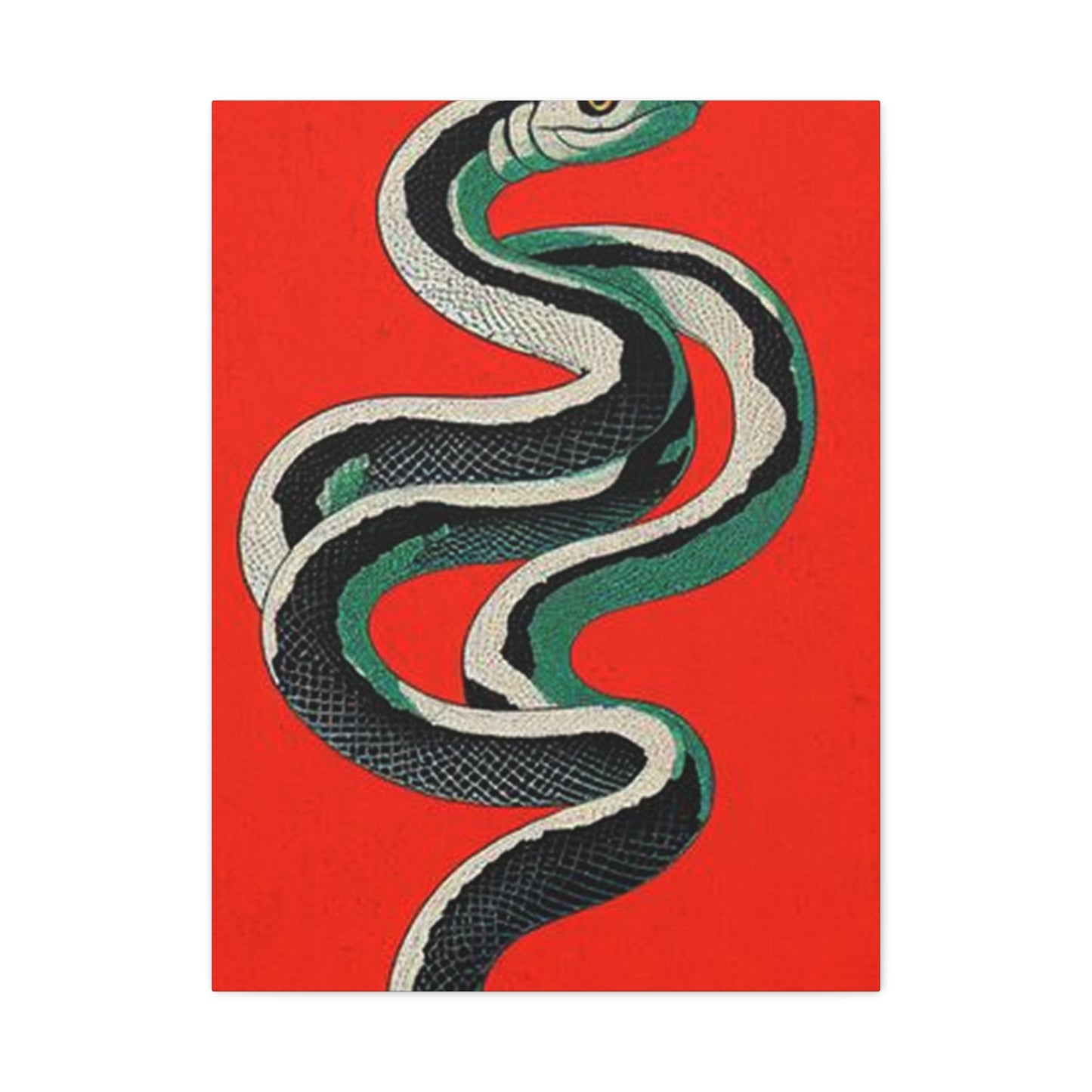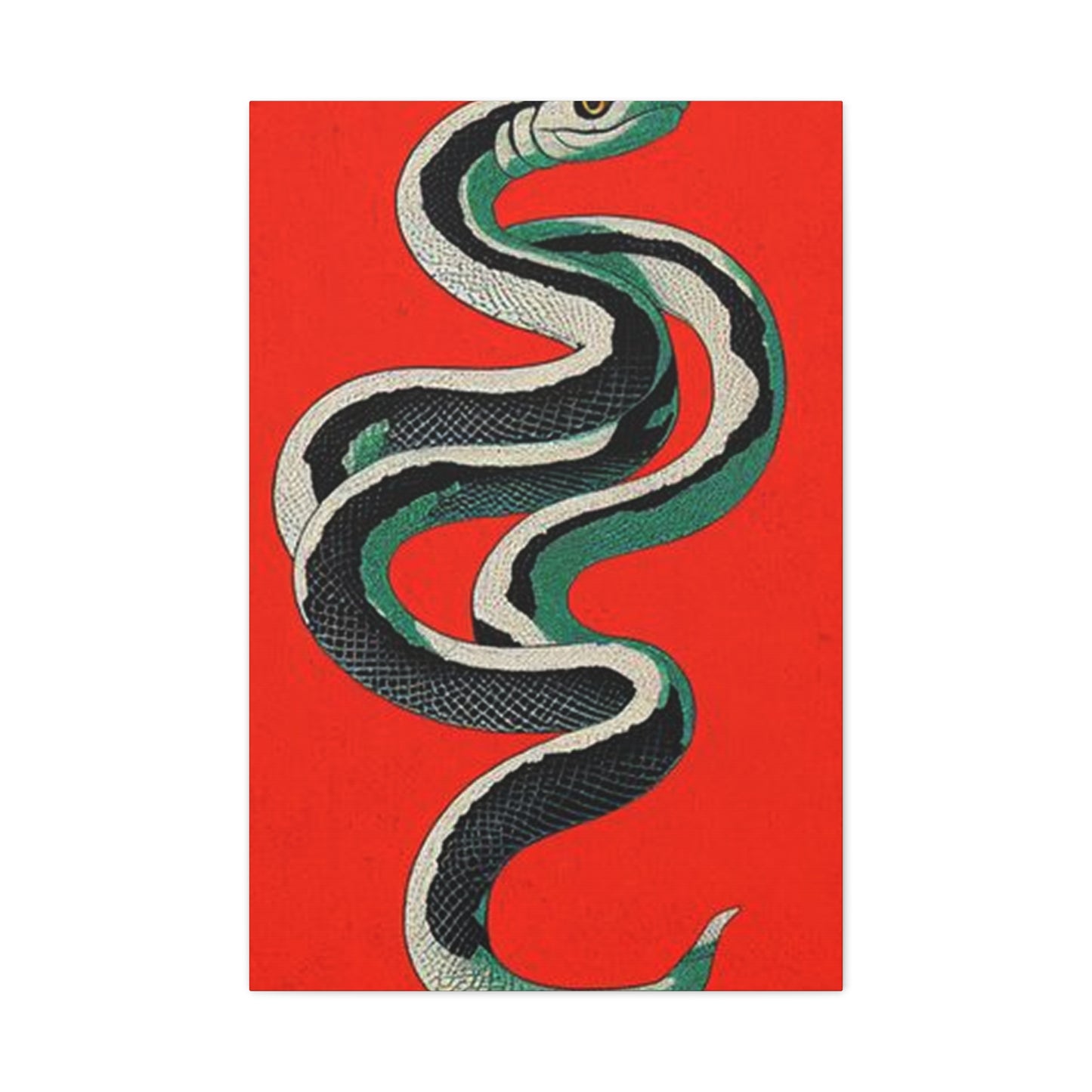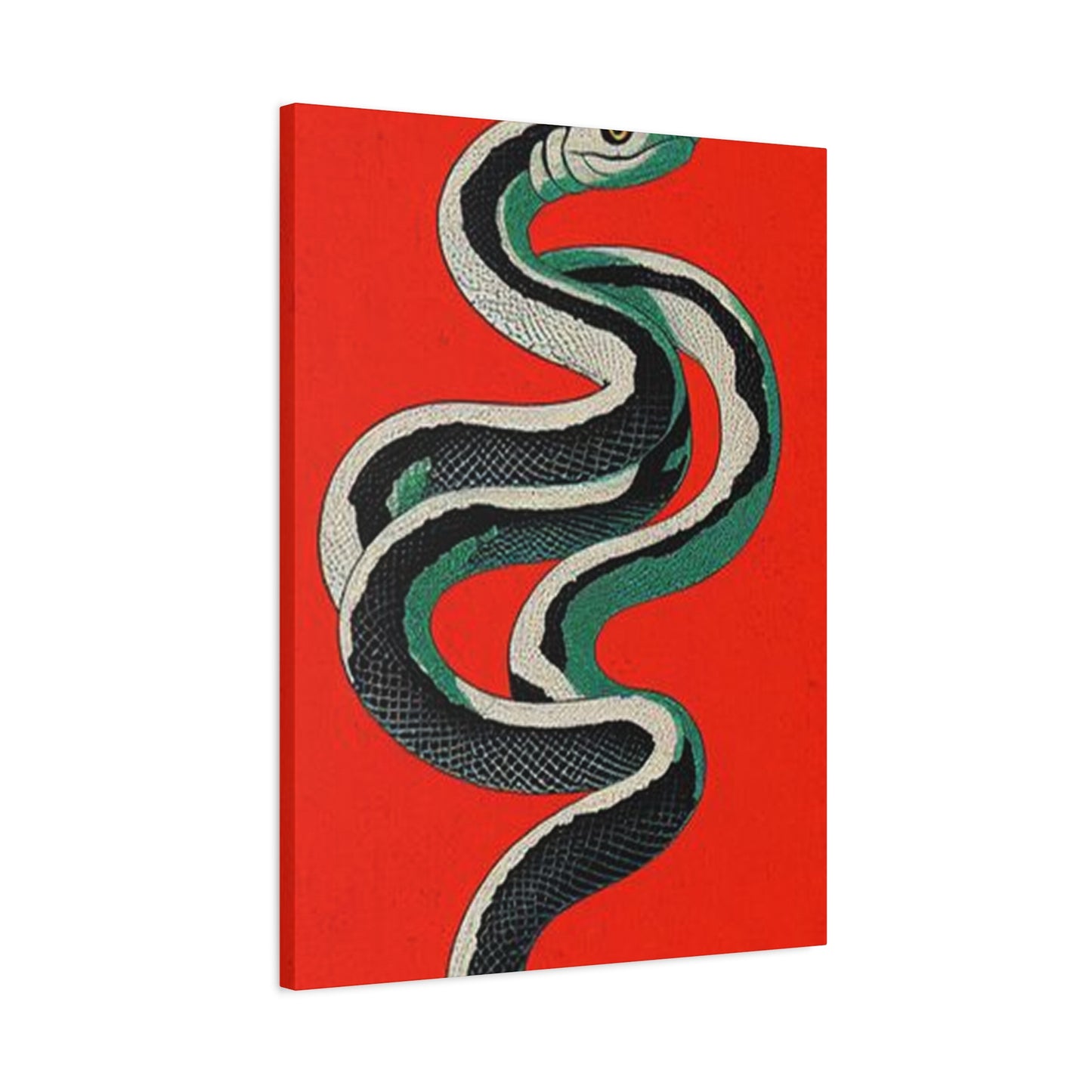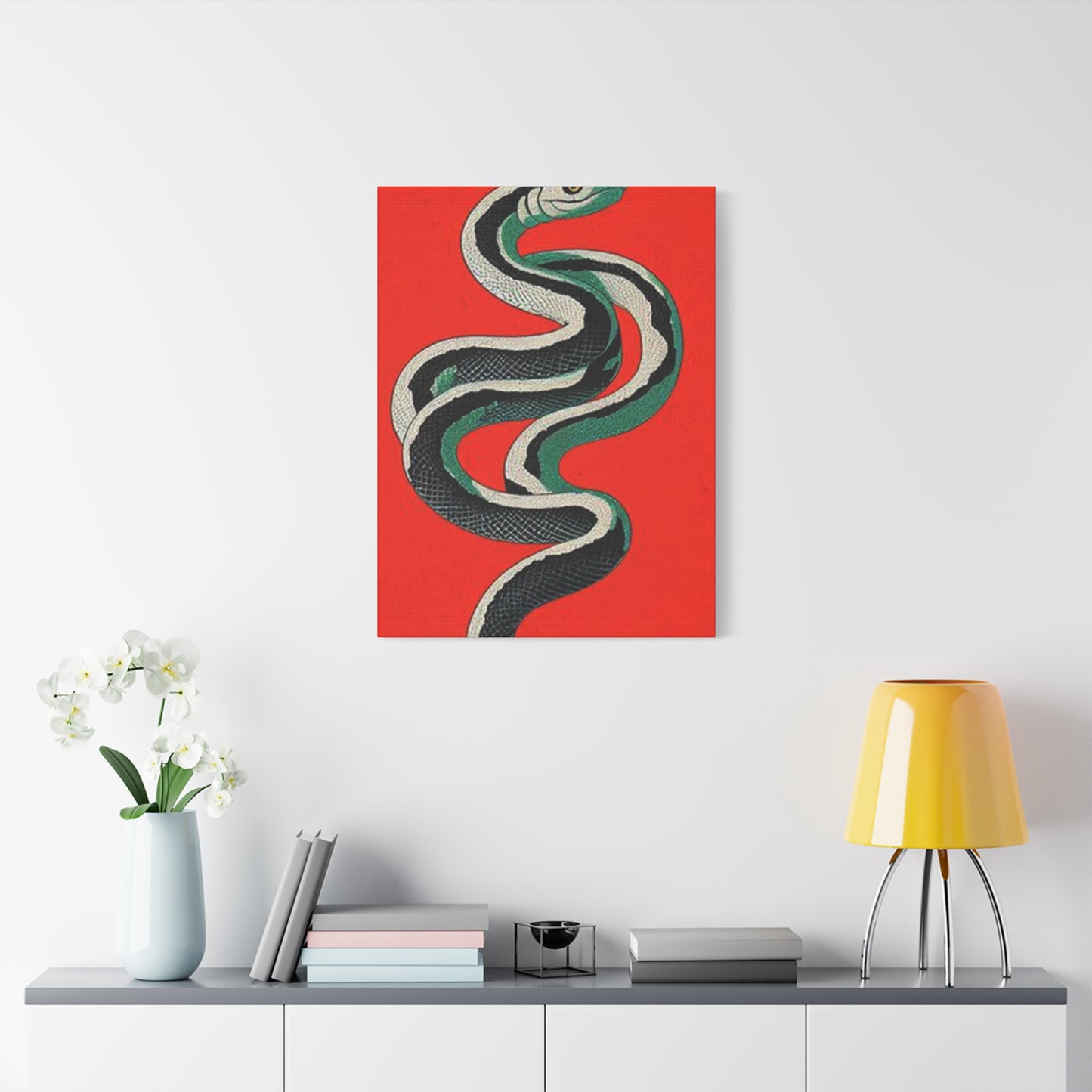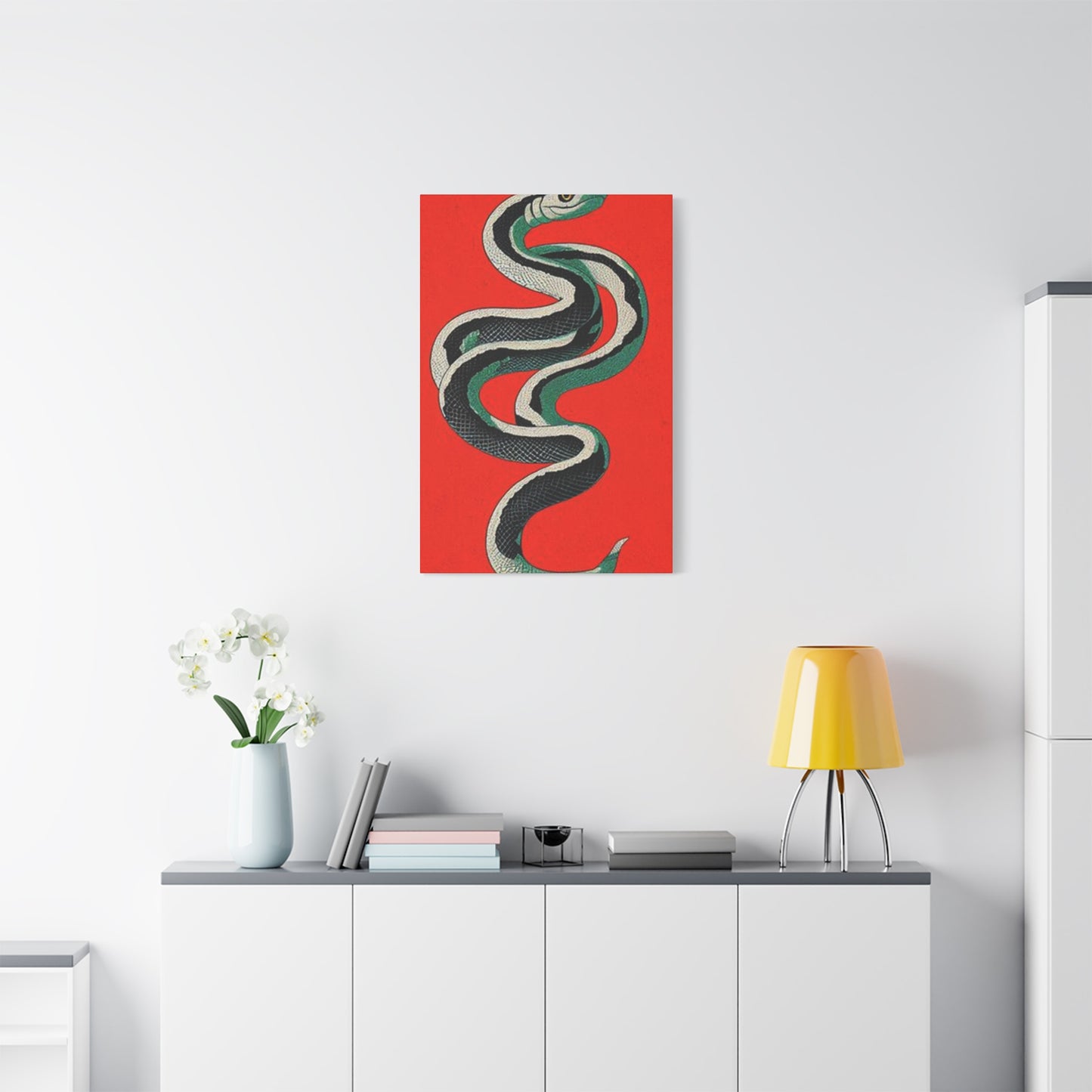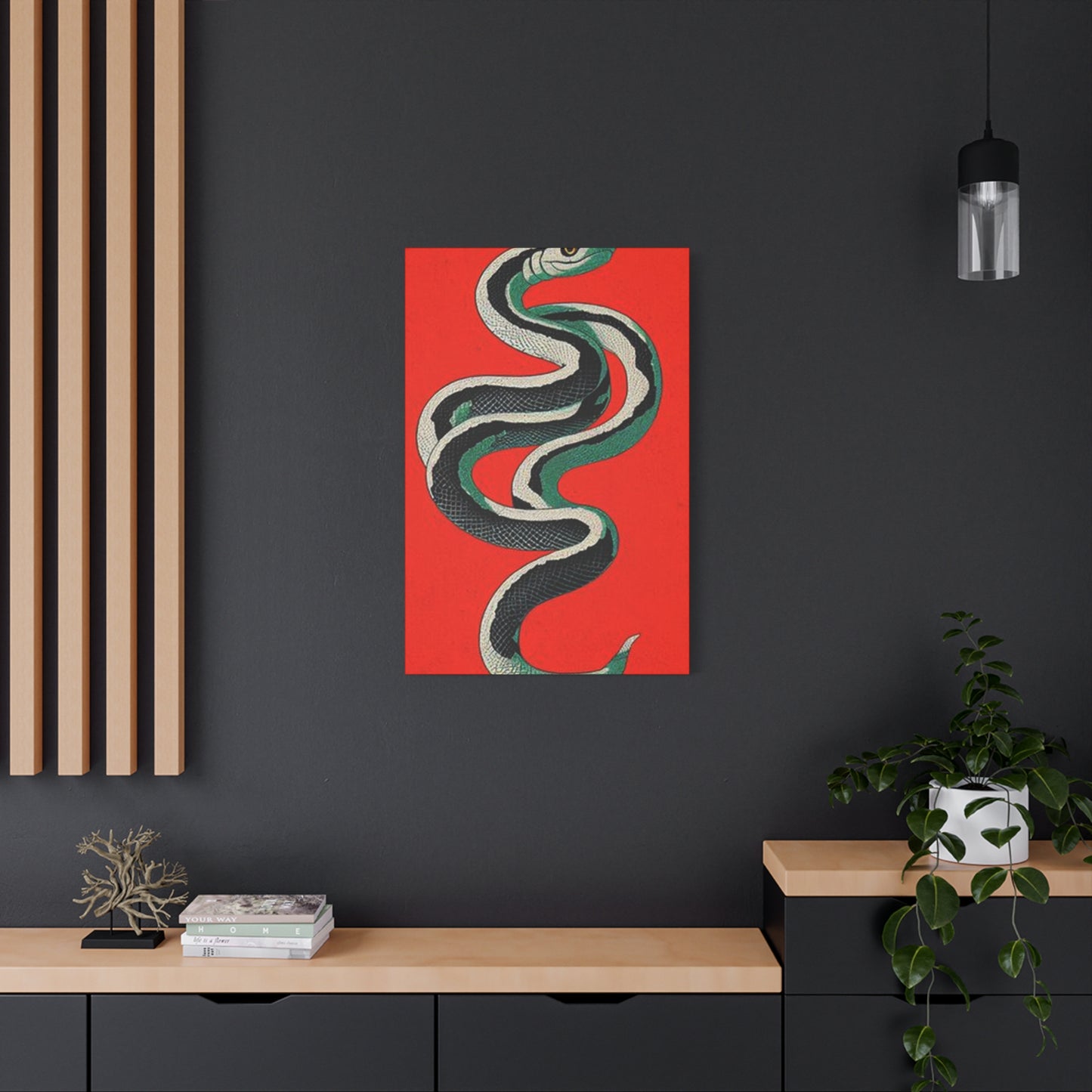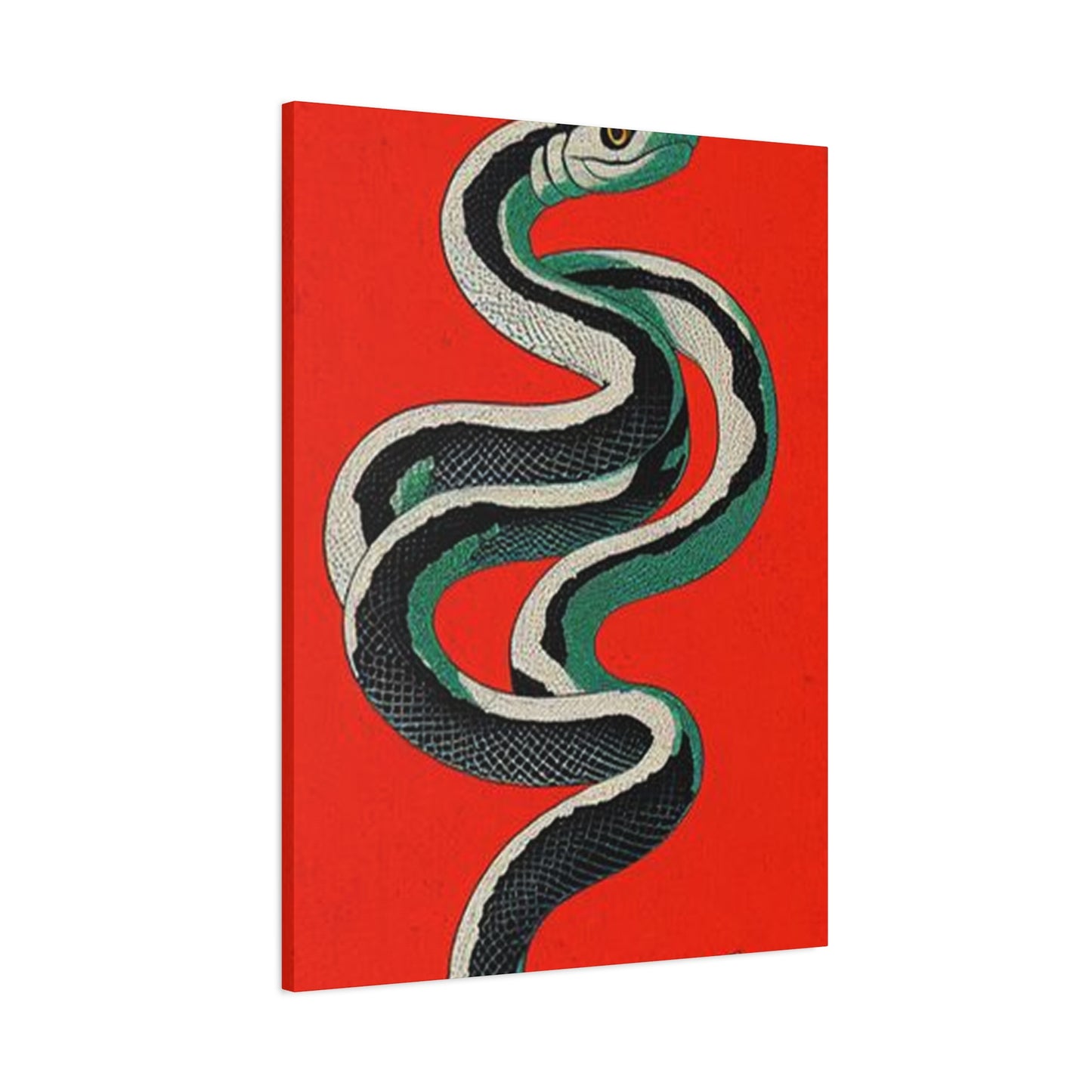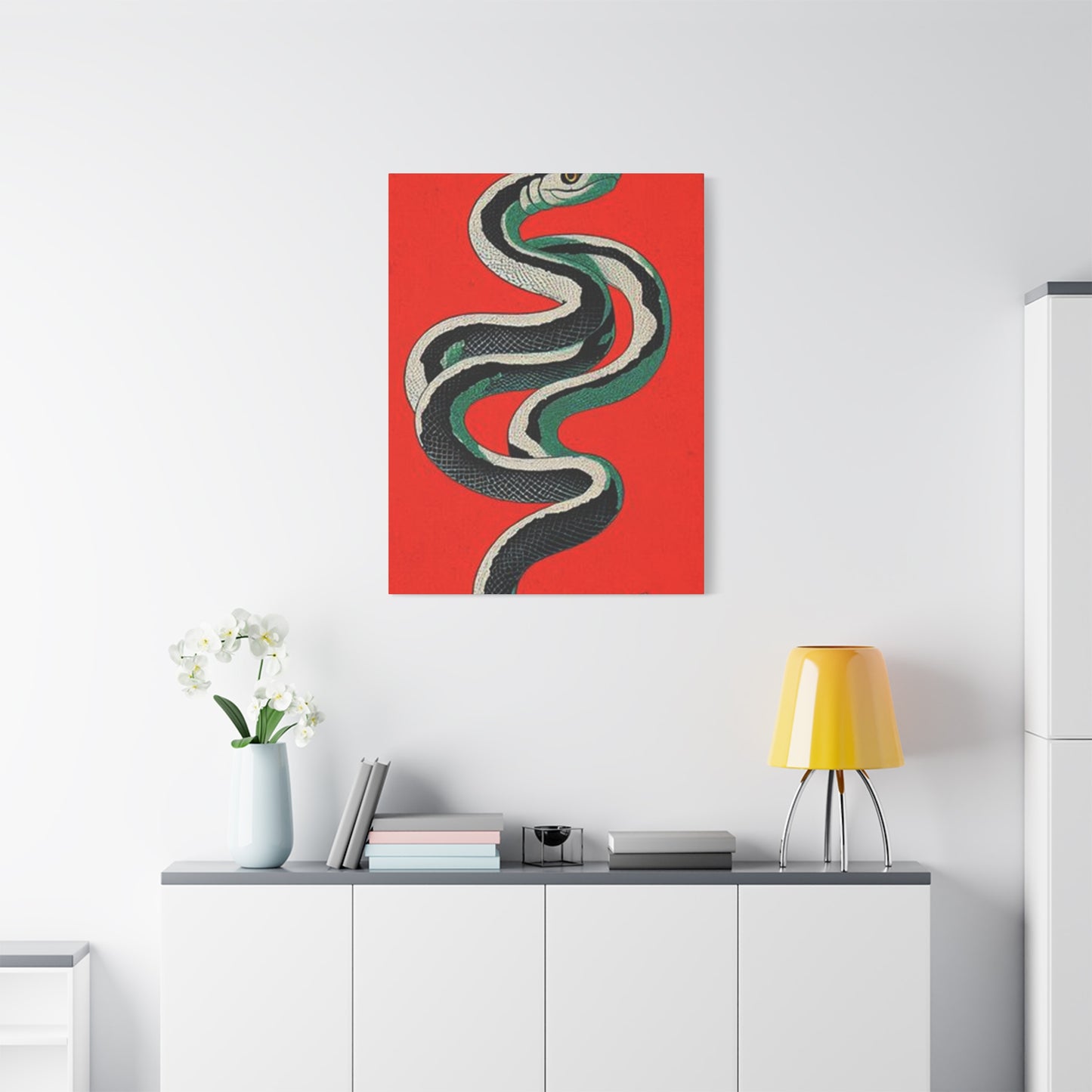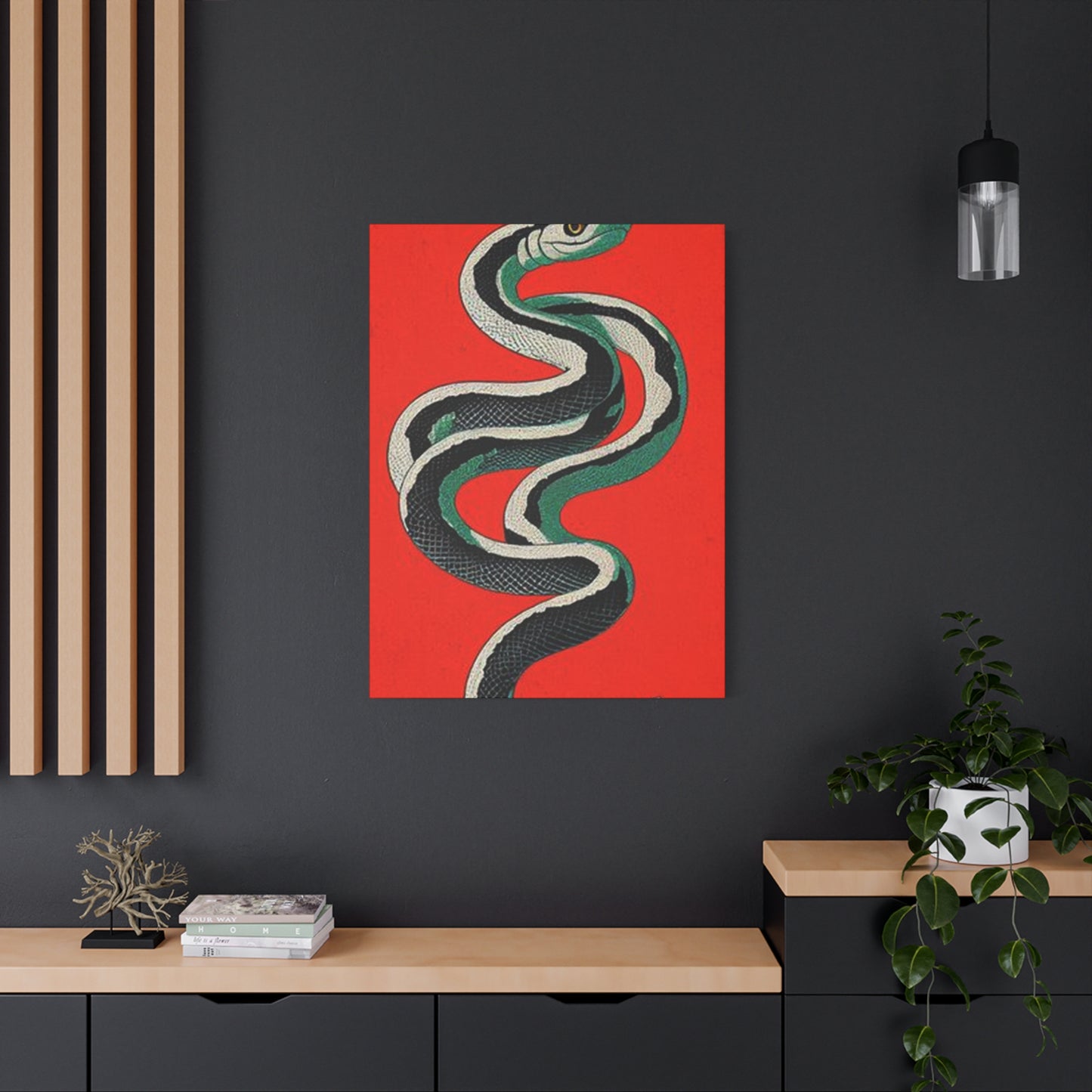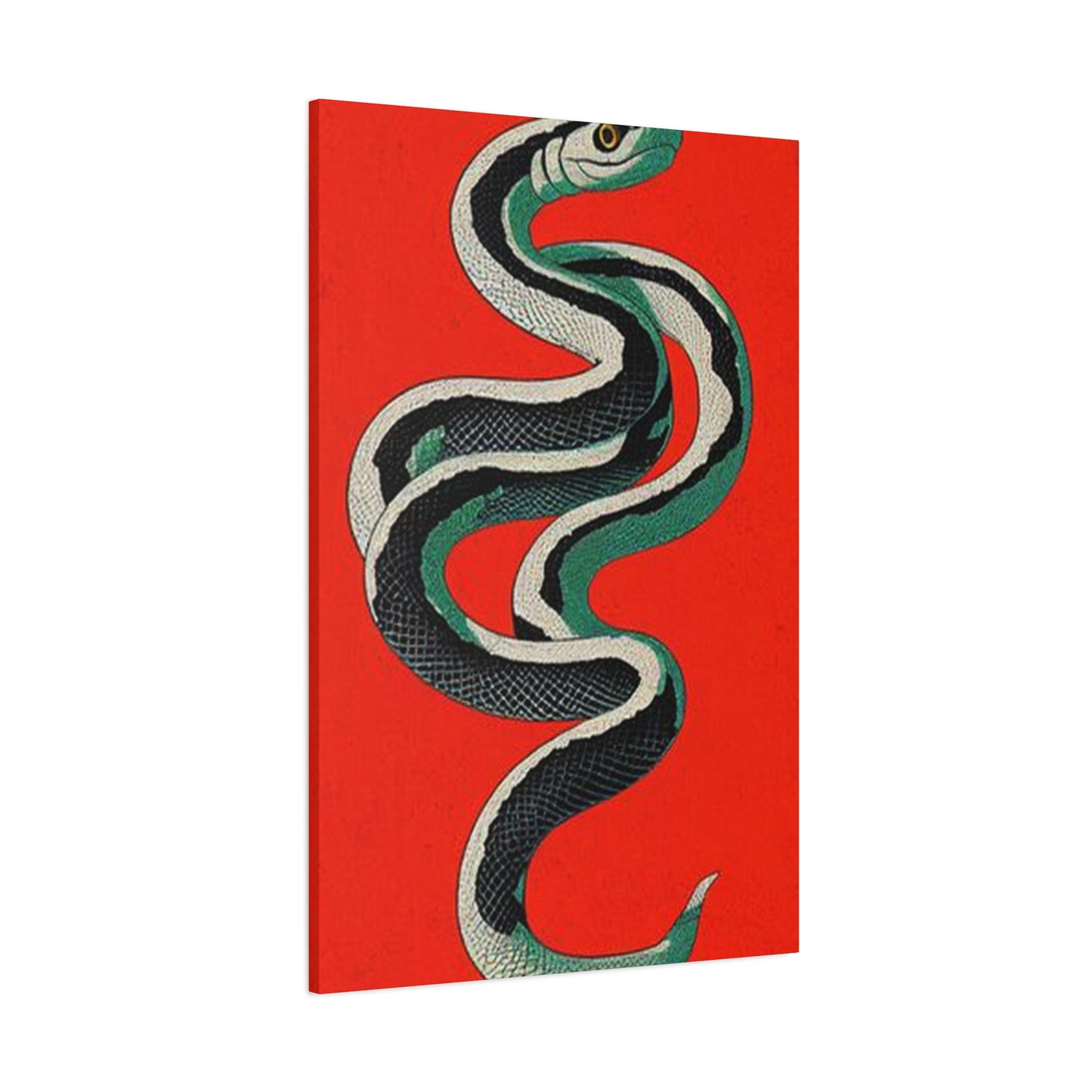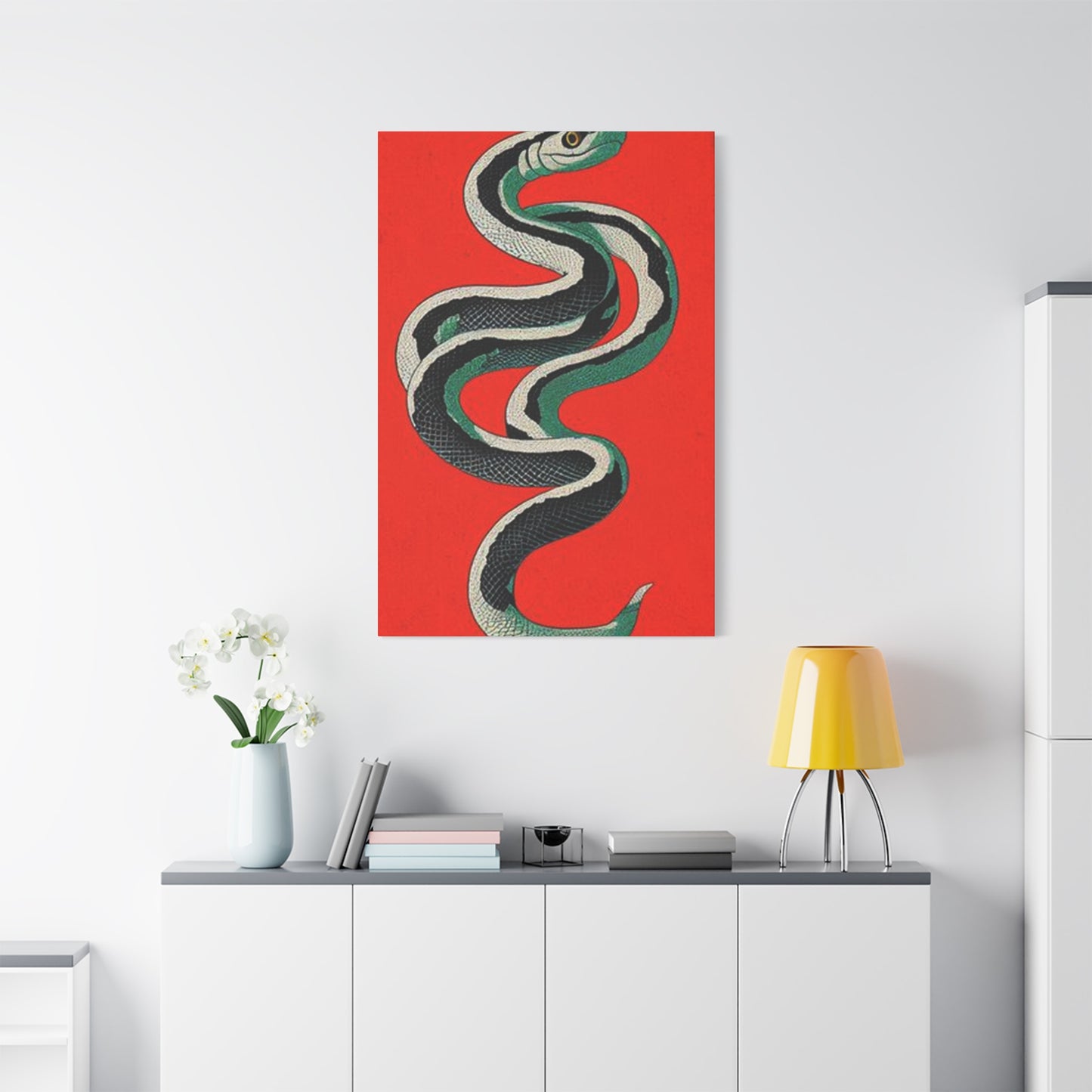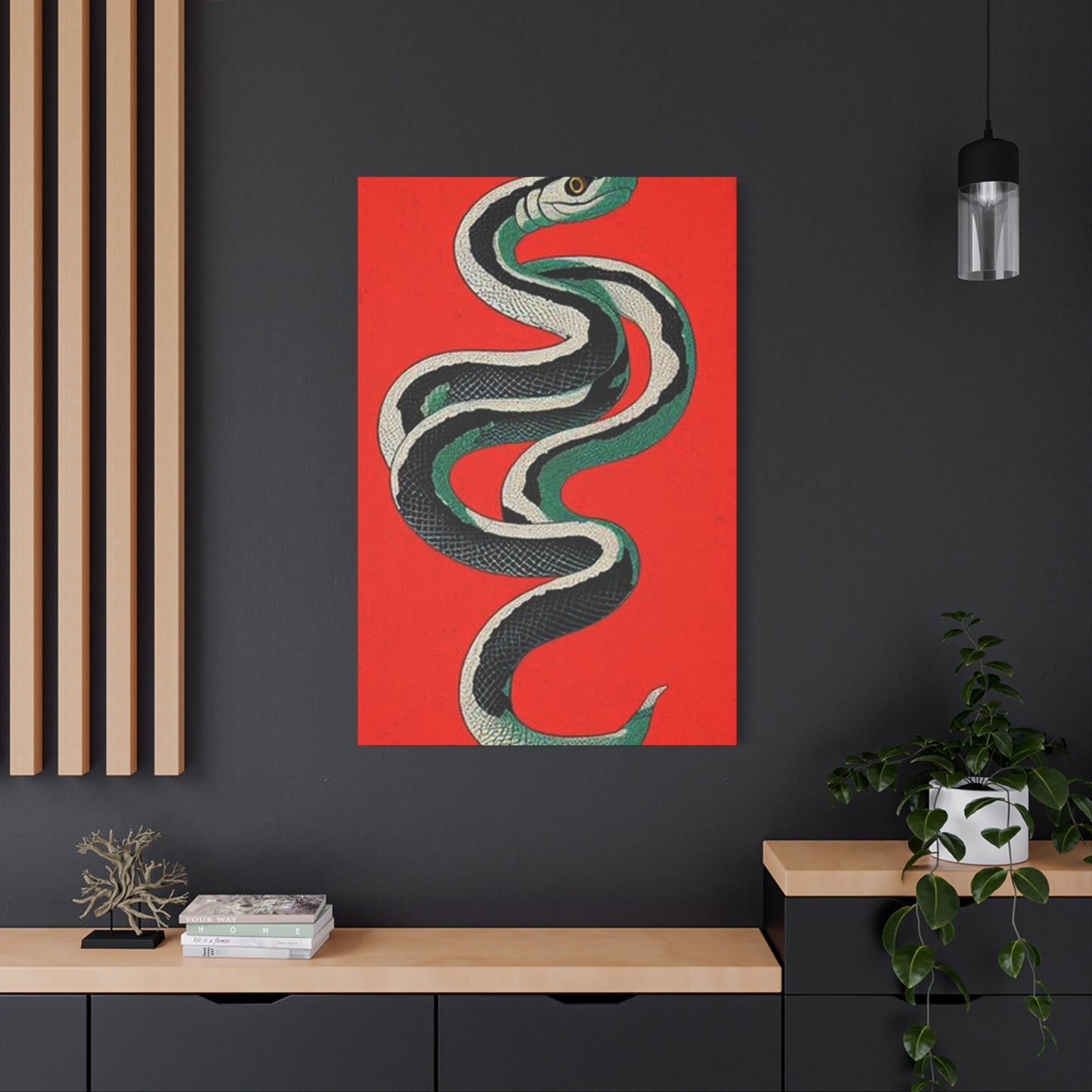The Serpent in Art: Exploring Duality, Power, and Beauty Through Snakes Wall Décor
Snake wall art canvas prints represent one of the most dynamic and symbolically rich categories in modern home decor. This comprehensive guide will explore every facet of this art form, from its deep historical and cultural symbolism to the practical considerations of selecting and styling the perfect piece for your space. We will journey through artistic styles, color psychology, and the specific allure of different serpent species, creating an exhaustive resource for anyone drawn to the enigmatic beauty of these creatures. This is not just an exploration of a decor trend; it is a deep dive into an ancient archetype brought to life on canvas, ready to transform any interior with its unique blend of danger, elegance, and profound meaning.
The Enduring Fascination with Serpents
Humanity's relationship with the serpent is as old as civilization itself. It is a bond woven from threads of fear, reverence, awe, and deep curiosity. No other creature carries such a potent and dualistic charge. In ancient myths, they are creators and destroyers, healers and tempters, guardians of sacred knowledge and omens of dark power. This profound complexity is precisely why the snake endures as a timeless icon. Our fascination is not just with the physical animal—its sinuous, legless form, its hypnotic gaze, and its silent, sudden movements—but with what it represents. The snake is the ultimate symbol of transformation, most vividly captured in the act of shedding its skin. This process, known as ecdysis, is a powerful metaphor for renewal, rebirth, and leaving the past behind to emerge anew. This concept resonates deeply with the human desire for growth, change, and second chances. This symbolic weight makes the serpent a compelling subject for artists and a powerful statement piece in home decor. When we hang snakes wall art canvas prints, we are not just displaying an image of a reptile; we are inviting a powerful narrative of transformation and eternity into our personal environment, making a statement that resonates on a primal, subconscious level.
Why Snakes in Art? A Symbol of Power and Transformation
The translation of the serpent from myth to canvas is a tradition that spans millennia. In ancient Egypt, the Uraeus, a rearing cobra, symbolized royalty and divine authority, protecting the pharaoh. In Greek mythology, Asclepius, the god of medicine, wielded a staff entwiled with a single snake, a symbol of healing that endures today in the Rod of Asclepius. Conversely, the Judeo-Christian tradition casts the serpent as a figure of temptation and cunning in the Garden of Eden. This incredible range of interpretation is an artist's dream. It allows for an endless spectrum of expression, from terrifying power to serene wisdom. An artist can depict a snake as a guardian, a healer, a symbol of primal nature, or a representation of hidden knowledge. This inherent ambiguity is what gives snake art its power. A snake canvas print is never passive; it always engages the viewer, demanding interpretation and evoking a visceral reaction. It challenges perceptions and serves as a potent focal point. Choosing snakes wall art for your home is a deliberate act of embracing this complexity. It signifies an appreciation for subjects that are not just beautiful but also meaningful, layered, and thought-provoking. It is a nod to the wild, the untamed, and the cyclical nature of life itself.
The Rise of Snakes Wall Art Canvas Prints in Modern Decor
In recent years, snakes wall art canvas prints have slithered from the fringes of niche decor into the mainstream, becoming a sophisticated and edgy choice for contemporary interiors. This surge in popularity can be attributed to several converging trends. Firstly, there is a growing desire for maximalism and personal expression in home design. Homeowners are moving away from sterile, minimalist spaces and embracing decor that reflects their personality, passions, and even their shadow side. A snake canvas is the antithesis of generic "safe" art; it is a bold declaration. Secondly, aesthetics like "dark academia," "gothic," and "witchy" or "eclectic bohemian" have gained massive traction, all of which heavily feature naturalistic, historical, and mystical elements. The serpent is a natural fit for these styles. Thirdly, the quality of canvas printing technology has reached new heights. Today's prints can capture the iridescent shimmer of scales, the deep, glossy black of a python, or the intricate, jewel-like pattern of a viper with stunning clarity and depth. This realism makes the art feel more immersive and luxurious. A high-quality snake canvas print can add a touch of exotic luxury, a hint of intellectual curiosity, or a raw, natural energy to a room, making it a versatile tool for any forward-thinking designer or homeowner.
Understanding the Symbolism of Serpents in Home Interiors
When you introduce snake imagery into your home, you are importing a vast library of global symbolism. Understanding these meanings can help you choose a piece that truly aligns with your personal narrative and the energy you wish to cultivate. In many Eastern cultures, snakes are revered as protectors and symbols of good fortune. The Naga, a mythical serpent deity in Hinduism and Buddhism, is often depicted as a guardian of treasures and sacred temples. A canvas print featuring a serene or majestic snake can thus evoke a sense of protection, guardianship, and abundance for the home. In contrast, the Ouroboros—the ancient symbol of a snake eating its own tail—represents the infinite cycle of life, death, and rebirth. A piece featuring this motif is perfect for a study, library, or meditation space, as it speaks to concepts of eternity, self-reflection, and the unending flow of energy. The shedding of skin is perhaps the most universally understood symbol. A piece of snakes wall art can serve as a powerful daily reminder of your own capacity for growth, healing, and personal evolution. It can represent a new chapter in life, a recovery from illness, or a commitment to personal development. By consciously selecting snake art, you are curating not just the look of your space, but its spiritual and psychological atmosphere as well.
Realistic and Hyper-Realistic Snake Canvas Art
For the naturalist and the lover of detail, realistic and hyper-realistic snakes wall art canvas prints offer an unparalleled window into the creature's beauty. This artistic style focuses on capturing the serpent with anatomical precision and breathtaking detail. Artists specializing in this genre spend countless hours rendering each individual scale, the subtle gradient of color, and the wet, reflective gleam of the eye. The result is a piece of art that feels alive and tangible, as if you could reach out and touch the cool, smooth skin. Hyper-realism, in particular, often plays with scale, magnifying a snake's head to fill a large canvas. This technique transforms the creature into a stunning abstract landscape of pattern and texture, allowing the viewer to appreciate the intricate geometry and biological artistry of its design. These pieces are powerful conversation starters and work exceptionally well in modern, minimalist, or industrial spaces where the art can serve as a singular, dramatic focal point. A hyper-realistic portrait of a python, with its complex, map-like patterns, or a vibrant green tree viper coiled on a branch, brings a powerful piece of the wild, untamed world into a sterile environment, creating a stunning and dynamic contrast. This style honors the snake as a marvel of natural engineering and design.
Abstract and Interpretive Serpent Art on Canvas
At the other end of the spectrum lies abstract and interpretive snake art. This style is less concerned with capturing the literal appearance of the snake and more focused on conveying its essence, energy, and symbolic meaning. Abstract artists use color, line, and form to evoke the sinuous movement, the coiled potential, and the mystical aura of the serpent. You might find a canvas dominated by a single, flowing S-shaped curve that suggests the path of a snake through sand, or a chaotic burst of colors and lines representing the explosive energy of a strike. Interpretive art can blend the snake's form with other elements, such as botanicals, mandalas, or celestial patterns, to create a new, hybrid symbol. This style is deeply personal and subjective, both for the artist and the viewer. A piece of abstract snakes wall art is perfect for spaces that are designed to inspire creativity, contemplation, and emotion, such as a studio, a reading nook, or a bedroom. It moves beyond the physical creature to explore the idea of the snake, allowing for a more profound and philosophical connection. These pieces often feature bold color palettes or, conversely, stark monochromatic schemes, making them versatile additions to eclectic, bohemian, or highly contemporary homes where art is chosen for its emotional resonance rather than its literal subject matter.
Minimalist Snake Designs for Subtle Elegance
While many snakes wall art canvas prints are designed to be bold, dramatic focal points, there is a growing appreciation for minimalist interpretations that prioritize subtlety and elegance. Minimalist snake art strips the creature down to its most essential elements: its line, its form, and its movement. In this style, a snake may be represented by a single, flowing, unbroken line on a stark white or black background. The emphasis is not on the scales, the fangs, or the detailed patterns, but on the pure, sinuous grace of the serpent's body. This approach is incredibly versatile. A simple, calligraphic snake design can add a touch of sophisticated, intellectual curiosity to a Scandinavian-inspired or Japanese-influenced interior. It feels less like a portrait of an animal and more like a piece of symbolic calligraphy. Other minimalist designs might use negative space, where the shape of the snake is formed by the empty space between two other abstract shapes. These pieces are often monochromatic, relying on the interplay of black and white to create impact. They are perfect for those who are drawn to the snake's symbolism of renewal and wisdom but prefer a more understated and contemplative aesthetic for their home.
Mythological and Fantasy Snake Canvases
The snake is one of the most powerful and recurring figures in mythology and fantasy, and this genre of art allows for breathtaking and imaginative compositions. Mythological snakes wall art canvas prints move far beyond the constraints of biology, depicting serpents of impossible size, color, and ability. This is where you will find art depicting Jörmungandr, the Norse World Serpent, so vast it encircles the entire world of mortals. You might see canvases of Quetzalcoatl, the feathered serpent god of the Aztecs, a stunning fusion of reptile and bird rendered in brilliant, jewel-like colors. Fantasy art often features dragon-like snakes with multiple heads, glowing eyes, or iridescent scales that shimmer with magical energy. These pieces are not just decor; they are portals to other worlds. They tell epic stories of gods, monsters, and heroes. A large canvas depicting a mythical snake can serve as a powerful and dramatic centerpiece in a game room, a library, or a home theater. This style often employs a rich, detailed, and painterly technique, reminiscent of classic fantasy book covers or concept art for epic films. It appeals to the storyteller, the dreamer, and anyone who wants their art to be a source of wonder and grand narrative.
Botanical Snakes: Serpents in Natural Settings
There is a unique and compelling beauty in botanical snake art, which depicts the serpent within its natural environment, often intertwined with flowers, vines, and lush foliage. This style creates a fascinating juxtaposition of danger and delicacy. The coiled, scaly body of a snake wrapped around a fragile stem of orchids, or a vibrant green viper hiding amongst the broad leaves of a monstera plant, evokes a powerful senseof the "beautiful hidden danger" found in nature. This art style can range from dark and romantic, reminiscent of Victorian illustrations or the concept of the "poison garden," to bright and tropical, celebrating the biodiversity of the rainforest. The snake in a botanical setting often feels more natural and less confrontational, as it is presented as a harmonious part of an ecosystem. These snakes wall art canvas prints are exceptionally popular in bohemian, eclectic, and "jungalow" style interiors, where they complement an abundance of live plants and natural textiles. The interplay of textures—the smooth petals, the rough bark, and the sleek scales—makes for a visually rich and complex image. This style celebrates the snake not as a monster or a god, but as a beautiful and integral part of the natural world.
Geometric and Pattern-Based Snake Art
Geometric snake art is a highly modern and stylized approach that transforms the organic, flowing lines of the serpent into a structured, mathematical design. In this style, the snake's body might be rendered as a series of interconnected triangles, hexagons, or other polygons, creating a low-poly or crystalline effect. This technique gives the snake a digital, futuristic, or even mineral-like quality. Other artists focus on the snake's scales, abstracting them into a mesmerizing, repetitive pattern. A canvas might be filled entirely with the tessellated, jewel-like pattern of snake skin, becoming a piece of pure abstract art that only reveals its subject upon closer inspection. This style often employs strong, clean lines and bold color-blocking. Geometric snake art is a perfect fit for contemporary, modern, or minimalist interiors, as it echoes the clean lines of modern furniture and architecture. It can also serve as a bridge between the organic and the man-made, making it a sophisticated choice for a home office or a tech-focused living space. This style appeals to those with an appreciation for design, structure, and the inherent mathematical beauty that can be found in natural forms. It’s a cerebral and stylish interpretation of the classic snake motif.
Dark and Gothic-Inspired Snake Canvases
For those drawn to the mysterious, the romantic, and the macabre, dark and gothic-inspired snake canvases offer a powerful and evocative aesthetic. This style plunges the serpent into a world of shadow, mystery, and ancient symbolism. The color palettes are typically deep and moody, dominated by blacks, blood reds, deep purples, and forest greens, often highlighted with a sliver of metallic gold or silver. The snake is frequently paired with other potent gothic symbols: a skull, a wilted rose, a detailed anatomy illustration, or ancient alchemical symbols. The Ouroboros, the snake eating its own tail, is a common motif in this genre, symbolizing eternity and the cyclical nature of life and death. The art often has a historical or antique feel, as if it were a lost illustration from an old grimoire or a forgotten medical textbook. These snakes wall art canvas prints are central to aesthetics like dark academia, gothic-inspired decor, and witchy or mystical interiors. They create an atmosphere of intellectual curiosity, romantic melancholy, and hidden knowledge. Hanging a gothic snake canvas in a study, library, or bedroom is a way to create a deeply personal and atmospheric space that feels both timeless and profoundly intimate.
Vibrant and Colorful Pop Art Snakes
At the absolute opposite end of the spectrum from the dark and gothic style is the explosion of energy found in pop art snake canvases. This style, inspired by the art movement of the mid-20th century, treats the snake as a bold graphic icon rather than a realistic creature. Think of a serpent rendered in neon pink, electric blue, or sunshine yellow, set against a clashing, patterned background. Pop art uses techniques like bold outlines, flat planes of color, and halftone dots, similar to comic book illustrations. An artist might create a repeating pattern of snakes in different, unnatural colors, or depict a single, stylized cobra in a style reminiscent of Andy Warhol's iconic prints. These snakes wall art canvas prints are playful, irreverent, and energetic. They strip the snake of its traditional "danger" symbolism and repackage it as a fun, edgy, and fashionable motif. This style is perfect for eclectic, maximalist, or mid-century modern homes where color is celebrated. A large, vibrant pop art snake canvas can inject a jolt of personality and humor into a neutral space, serving as a bright, optimistic, and high-energy focal point. It's a style that is less about hidden meaning and more about immediate visual impact and pure, unadulterated fun.
The Beauty of Black and White Snake Photography
Black and white photography offers a timeless, sophisticated, and powerfully focused interpretation of the snake. By removing the distraction of color, a monochromatic canvas print forces the viewer to engage with the core elements of the serpent: its texture, form, and the interplay of light and shadow across its body. The result is often a much more dramatic and emotionally resonant image. A black and white photograph can turn the intricate, overlapping scales of a python into a stunning abstract landscape of pattern and gradient. The high contrast of a pale snake on a dark background, or a dark snake in a bright, high-key setting, emphasizes its sinuous, graphic shape. This style is exceptionally versatile and can fit into almost any decor. In a minimalist or modern home, a black and white snake photograph adds a touch of organic elegance and artistic gravitas. In an industrial-style loft, it can enhance the raw, textural feel of the space. In a traditional or classic room, it feels timeless and intellectual. These snakes wall art canvas prints are a testament to the fact that the snake's form is so inherently compelling that it needs no color to create a profound impact. It is a choice for the art connoisseur who appreciates form, texture, and classic, enduring style.
Intricate Beauty: Celebrating Detailed Scale Patterns in Reptilian Art
The surface of a serpent represents one of nature's most remarkable design achievements, a flexible armor of overlapping scales creating both protection and mobility. Artists who choose to highlight this aspect of serpent anatomy create works of stunning intricacy, transforming biological function into mesmerizing pattern studies. Detailed serpent artwork that emphasizes scales appeals to viewers who appreciate technical excellence and the meditative quality of repetitive patterns, offering visual complexity that rewards sustained attention. Scale patterns vary dramatically across species, from the smooth, glossy finish of corn snakes to the heavily keeled scales of vipers, each adaptation reflecting evolutionary pressures of specific environments. Artists who study these variations create work that educates as it beautifies, celebrating biodiversity while producing stunning wall art. Close-up photography or highly detailed illustrations that fill entire canvases with scale patterns create almost abstract compositions, the overall serpent form becoming secondary to the intricate surface texture.
These pieces function similarly to traditional geometric pattern studies, providing visual interest through repetition and subtle variation that calms and focuses attention. In spaces designed for concentration and detailed work, scale-focused serpent artwork reinforces the value of attention to small elements and the beauty found in careful observation. Home offices, craft rooms, and studios benefit from this subliminal messaging, creating environments that encourage patience and precision. The mathematical regularity of scales also appeals to viewers with analytical inclinations, offering natural geometry that bridges scientific and artistic appreciation. The color possibilities within scale-detailed artwork are particularly rich. While naturalistic treatments showcase the subtle color gradations within individual scales—the way light creates iridescent effects on certain species or the pattern variations that provide camouflage—more artistic interpretations transform scales into jewel-like surfaces or metallic finishes. These fantastical treatments maintain the essential structure of scales while reimagining their color properties, creating pieces that read as both natural and fantastical.
Geometric Grace: Contemporary Abstract Interpretations of Serpentine Forms
The movement of contemporary art toward abstraction and essential forms has produced fascinating reinterpretations of serpent imagery that reduce these creatures to their most fundamental visual elements. These abstract serpentine works appeal to viewers who appreciate the symbolic power of serpents while preferring less literal representations. By emphasizing curves, patterns, and essential shapes rather than realistic details, abstract serpent art bridges the gap between wildlife imagery and pure form studies, creating pieces that work within a broader range of interior design contexts. The serpent's body, essentially an elongated curve capable of infinite configurations, provides exceptional material for abstract exploration. Artists working in this mode study the mathematical properties of serpentine movement, translating biological motion into flowing lines that capture essential serpent energy without depicting recognizable anatomy. These pieces work beautifully in modern spaces where geometric abstraction dominates, where the serpent's organic curves provide necessary contrast to angular furniture and architectural elements while maintaining overall aesthetic coherence through their treatment.
Color field approaches to serpent abstraction reduce reptile patterns to color studies, extracting the hues found in specific species and arranging them in abstract compositions that reference their biological source without depicting it. These pieces work particularly well in spaces where color coordination matters deeply, allowing residents to incorporate serpent symbolism and energy while maintaining tight control over their color palette. A piece abstracting the greens, browns, and golds of a tree python, for instance, brings those natural tones into a space in ways that complement rather than compete with existing color schemes. Pattern abstraction represents another productive approach, taking the geometric regularity of scales and translating them into tessellating designs or rhythmic repetitions that create meditative effects. These works appeal to viewers who appreciate the order found within nature, the mathematical precision that underlies apparently organic forms. Pattern-based serpent abstractions work beautifully in spaces with other geometric elements, creating visual dialogue between human-made and nature-inspired geometries. The psychological impact of abstract serpent art differs from realistic representations while retaining connection to the creature's symbolic power.
Cultural Phenomenon: Understanding the Growing Popularity of Serpentine Wall Décor
The contemporary surge in serpent-themed home décor reflects multiple converging cultural trends, from renewed interest in natural world imagery to the ongoing fascination with symbolism and meaning in material culture. Understanding these broader patterns illuminates why serpent artwork resonates so strongly with current design sensibilities and helps predict the theme's staying power beyond temporary trend status. The wellness movement's emphasis on transformation and personal growth aligns perfectly with serpent symbolism. As more individuals engage with practices like yoga, meditation, and various personal development modalities, the serpent's representation of kundalini energy and transformation becomes culturally relevant. Wellness-focused individuals naturally gravitate toward décor reflecting their values and practices, making serpent artwork meaningful rather than merely decorative. This connection to broader lifestyle commitments suggests serpent art's appeal extends beyond aesthetics to identity expression. Social media's visual culture has dramatically influenced home décor trends, with platform algorithms favoring striking, distinctive content over subtle conventionality.
Serpent artwork's inherent drama makes it highly shareable, creating visibility that drives popularity. Interior design influencers showcasing spaces with bold serpent prints generate engagement that safer décor choices cannot match, creating feedback loops where popularity drives more content featuring serpent themes, which further normalizes and popularizes the aesthetic. This visibility has introduced serpent imagery to audiences who might never have considered it through traditional design channels. The broader acceptance of diverse spiritual and symbolic systems in pluralistic societies has created cultural space for serpent symbolism's multifaceted meanings. Unlike earlier eras when dominant religious traditions might have deemed serpent imagery inappropriate or negative, contemporary eclecticism allows individuals to engage with serpent symbolism from various traditions without controversy. This openness lets residents choose serpent artwork based on personal resonance rather than worrying about social acceptability, expanding the potential audience for such pieces. Luxury fashion's embrace of snakeskin patterns and reptilian textures has created aesthetic familiarity with these patterns in ways that translate to home décor. When major fashion houses feature snake-inspired designs prominently.
Personal Growth Reflected Through Serpentine Symbolism
The choice to incorporate serpent imagery into personal living spaces often reflects deeper psychological processes and commitments to personal development. Understanding these psychological dimensions adds richness to serpent artwork's appeal, revealing how decorative choices can support and reinforce internal work. The relationship between external environment and internal state operates bidirectionally, with spaces both reflecting and shaping consciousness in ongoing dialogue.The serpent's shedding process provides perhaps the most potent metaphor for psychological growth and healing. Therapeutic processes often involve releasing outdated patterns, beliefs, and identities that no longer serve current needs. This psychological shedding mirrors the serpent's physical process, making serpent imagery particularly meaningful for individuals engaged in therapy, recovery, or intentional personal transformation. Artwork depicting mid-shed serpents resonates especially strongly during transitional periods, normalizing the discomfort and awkwardness that characterize these liminal states.
The concept of individuation, central to Jungian psychology, involves integrating previously unconscious or rejected aspects of self into conscious awareness. The serpent appears frequently in dreams and mythology as a symbol of this unconscious material, representing both the treasures and dangers found in psychological depths. For individuals engaged with depth psychology, serpent artwork acknowledges this shadow work, creating environmental support for the challenging process of becoming more psychologically whole and integrated.Trauma recovery often involves reclaiming personal power and agency that traumatic experiences compromised. The serpent's symbolic associations with power, protection, and dangerous beauty make it meaningful for trauma survivors working to reclaim these qualities in themselves. Choosing serpent artwork can represent a declaration of personal sovereignty and refusal to remain victim to past experiences. The serpent's defensive rather than aggressive nature—most species avoid confrontation when possible but defend themselves fiercely when necessary—models healthy boundaries and self-protection that trauma recovery requires.
Creating Mood Through Mysterious Serpentine Elements
Interior spaces possess emotional atmospheres that profoundly affect inhabitants' moods and psychological states. Serpent imagery contributes specific atmospheric qualities that designers and homeowners can leverage to create desired emotional environments. Understanding these atmospheric effects allows for more intentional design that goes beyond visual aesthetics to orchestrate comprehensive sensory and emotional experiences within homes.Mystery represents the primary atmospheric quality that serpent imagery introduces. These creatures, often hidden until they choose to reveal themselves, carry associations with secrets, concealed knowledge, and things not immediately apparent. Spaces incorporating serpent artwork take on this mysterious quality, feeling like they contain depths beyond what's immediately visible. This atmospheric transformation works particularly well in spaces designed for introspection, creativity, or intimate conversation, where surface-level interaction gives way to deeper engagement.
The atmosphere of intensity that serpent imagery creates energizes spaces without requiring loud colors or chaotic compositions. Even calm, coiled serpent representations maintain a sense of potential energy, of power momentarily contained but available for release. This creates dynamic tension within spaces, preventing them from feeling too settled or stagnant. Home offices and creative studios particularly benefit from this energizing quality, which maintains alertness without the agitation that more overtly aggressive imagery might provoke.Serpent artwork also introduces an atmosphere of the exotic, connecting domestic spaces to wilderness and distant habitats most residents will never personally experience. This quality satisfies the human desire for adventure and connection to broader natural world while requiring no actual travel. For individuals whose circumstances limit physical exploration, bringing exotic atmosphere into homes through artwork provides important psychological relief from routine and limitation. The exotic quality works especially well in urban apartments where actual nature access may be minimal, creating windows into wilder worlds.
Aesthetic Sophistication: Serpents in High-End Interior Design Schemes
Luxury interior design increasingly embraces organic elements and natural world references within otherwise refined environments. Serpent imagery fits perfectly within this aesthetic evolution, providing the exotic appeal and symbolic depth that distinguish truly sophisticated spaces from merely expensive ones. High-end design recognizes that luxury involves not just quality materials and craftsmanship but also thoughtful curation that reflects intellectual engagement and personal authenticity.The use of serpent imagery in luxury contexts demonstrates confidence and willingness to embrace complexity rather than retreating into safe conventionality. Genuinely sophisticated spaces risk polarizing responses in service of authentic expression, recognizing that universal appeal often indicates bland compromise rather than distinctive vision. Serpent artwork signals that the space's creator prioritizes personal resonance and symbolic meaning over ensuring every visitor feels comfortable, a hallmark of true design sophistication.
Material quality and presentation elevate serpent imagery from merely interesting to genuinely luxurious. Museum-quality framing, archival printing processes that ensure longevity, and expert installation that considers sightlines and lighting all contribute to serpent artwork's luxury presentation. The difference between a poster hastily taped to walls and the same image professionally printed, expertly framed, and dramatically lit illustrates how presentation context determines whether artwork reads as sophisticated or juvenile.Scale considerations become particularly important in luxury applications of serpent imagery. Oversized pieces that command entire walls demonstrate the commitment of resources that luxury requires, while also ensuring maximum impact. Large-scale serpent artwork transforms from decorative accent to architectural feature, comparable to installing custom millwork or distinctive lighting fixtures. This architectural integration of artwork distinguishes high-end spaces from those where art remains an afterthought applied to finished rooms.
The curation story behind serpent artwork adds luxury value through narrative and provenance. Limited edition prints by recognized wildlife photographers, original paintings by collected contemporary artists, or antique natural history illustrations with documented histories all carry stories that mass-produced décor cannot match. Luxury consumers increasingly value these narratives, the knowledge that their serpent artwork connects them to specific artists, historical moments, or natural history traditions. This storytelling dimension transforms artwork from mere visual objects into conversation pieces with intellectual and cultural significance.Custom or commissioned serpent artwork represents the ultimate luxury application, where pieces are created specifically for particular spaces and clients. Working with artists to develop serpent imagery tailored to specific color schemes, thematic interests, or spatial requirements ensures absolute uniqueness while supporting living artists. This patronage relationship connects contemporary luxury consumers to historical traditions of artistic sponsorship, adding cultural significance to the acquisition process beyond simple purchase transactions.
Chromatic Choices: Color Strategies in Serpentine Wall Art
Color selection profoundly influences how serpent artwork integrates with existing spaces and the emotional effects it produces. Understanding color psychology and design principles helps homeowners and designers choose serpent pieces that achieve desired impacts while maintaining overall aesthetic coherence. The range of available color approaches, from strictly naturalistic to wildly interpretive, ensures serpent imagery can work within virtually any color scheme.Naturalistic color palettes featuring the actual hues found in various serpent species offer grounding, earth-connected energy. Greens, browns, tans, and subtle pattern variations create artwork that feels scientifically accurate while providing organic warmth. These natural color schemes work beautifully in spaces emphasizing connection to the natural world, complementing wood furniture, stone surfaces, and plant-filled environments. For residents committed to biophilic design principles, naturalistic serpent colors reinforce their overall aesthetic vision.
Monochromatic approaches, particularly black and white serpent photography or illustrations, provide dramatic impact while offering maximum design flexibility. These pieces integrate seamlessly with any color scheme, allowing the serpent's form and symbolism to dominate without color competition. Monochromatic serpent art works particularly well in minimalist or modern spaces where color discipline maintains visual calm. The graphic quality of black and white imagery also emphasizes pattern and form over naturalistic representation, creating more abstract effects even with photographic subjects.Jewel tone interpretations of serpent imagery introduce luxury and fantasy elements, transforming realistic subjects into fantastical creations. Serpents rendered in sapphire blues, emerald greens, ruby reds, or amethyst purples become almost mythological, connecting more to symbolic traditions than biological reality. These saturated, rich colors work beautifully in maximalist or bohemian interiors that celebrate color abundance. The jewel tone approach also allows serpent imagery to function as accent color delivery, bringing specific hues into spaces in dramatically scaled applications.
Metallic treatments, including gold, silver, copper, or bronze finishes, create glamorous serpent artwork that bridges natural and luxurious aesthetics. These pieces work exceptionally well in spaces with other metallic elements, creating cohesive metallic themes that feel both organic and opulent. Gold serpent imagery particularly resonates with the creature's historical associations with treasure and sacred objects, while silver or chrome treatments emphasize the serpent's cool, alien quality.Pastel or muted color interpretations create unexpectedly soft serpent imagery, challenging typical associations while creating pieces that work in gentler, more romantic spaces. Serpents in blush pinks, soft lavenders, or pale blues feel surreal and dreamlike, almost contradicting the creature's intense nature. This tension between subject and treatment creates interest while allowing serpent symbolism to enter spaces that couldn't accommodate more typical dark or dramatic renderings.
Complementary color schemes in serpent artwork create maximum visual vibration and energy, using opposing color wheel positions to generate dynamic tension. Orange and blue serpents, purple and yellow variations, or red and green combinations create pieces that command attention through color relationships as much as subject matter. These high-energy color approaches work well in creative spaces or areas designed to stimulate rather than soothe.Analogous color schemes using adjacent color wheel positions create more harmonious, unified effects while maintaining color interest. Serpent artwork in blue-green-teal ranges or orange-red-pink progressions feels more cohesive and contemplative than complementary schemes, offering subtler integration with surrounding environments. These color strategies work particularly well when artwork must coordinate closely with existing furnishings and finishes.
Optimal Placement Strategies for Serpentine Artwork
The impact of serpent artwork depends significantly on placement decisions, with location determining both practical visibility and psychological effects. Understanding spatial dynamics and strategic positioning ensures serpent pieces achieve maximum impact while serving their intended functions within homes. Thoughtful placement transforms good artwork into defining spatial features that anchor entire rooms.Focal wall applications position serpent artwork as the primary visual destination in rooms, typically on walls first visible when entering spaces. This prominent placement suits dramatic, large-scale pieces that deserve central attention. Living rooms often benefit from focal wall serpent art above sofas or fireplaces, creating conversation-starting centerpieces that establish the room's character. The focal wall approach requires commitment, as it concentrates visual weight in single locations, making the artwork choice critically important to overall spatial success.
Gallery wall integration allows serpent imagery to dialogue with other artworks, creating more complex narratives than single pieces achieve alone. Positioning serpent art within curated collections of complementary subjects creates intellectual and visual relationships that add meaning to all pieces involved. A serpent print might anchor a natural history-themed gallery wall alongside botanical illustrations and mineral specimens, or provide counterpoint in collections mixing wildlife with abstract or figurative works. The gallery approach requires careful curation to ensure the serpent piece neither dominates nor disappears within the arrangement.Hallway and corridor placements capitalize on serpent forms' horizontal potential, with the creatures' elongated bodies naturally complementing long, narrow spaces. Sequential serpent images down hallways create movement and visual interest in transitional spaces that often receive minimal design attention. This placement strategy also ensures regular engagement with the imagery, as residents pass through these spaces multiple times daily, allowing the artwork to maintain presence in daily consciousness.
Unexpected locations, including bathrooms, closets, or even laundry rooms, demonstrate commitment to comprehensive design that extends beyond main living areas. A sophisticated serpent print in a powder room creates memorable guest experiences, while serpent artwork in private spaces like primary bathrooms or dressing rooms reinforces personal connection to the imagery's symbolism. These unconventional placements prevent homes from feeling like artwork exists only for display rather than genuine resident enjoyment.Height considerations dramatically affect serpent artwork's impact and accessibility. Eye-level placement ensures comfortable viewing and direct psychological engagement, while higher positioning creates more architectural effects with less intimate connection. Lower placements, particularly in spaces where residents frequently sit, ensure artwork remains visible and engaging even when not standing. Bedroom serpent art might hang lower than living room pieces, acknowledging that residents typically view bedroom artwork while in bed.
Combining Serpentine Elements with Complementary Design Themes
Serpent imagery rarely exists in isolation; thoughtful designers integrate reptilian elements within broader thematic frameworks that amplify meaning and create cohesive environments. Understanding which themes naturally complement serpent symbolism allows for more sophisticated, layered design approaches that tell richer visual and conceptual stories throughout homes.Natural history and cabinet of curiosities themes create perfect contexts for serpent artwork, positioning reptilian imagery within broader explorations of biodiversity and natural world wonders. Combining serpent prints with preserved specimens, antique scientific instruments, geological samples, and botanical illustrations creates environments celebrating intellectual curiosity and empirical observation. These collections work beautifully in home libraries, studies, or offices, creating scholarly atmospheres that honor both artistic and scientific traditions of natural world documentation.
Transformation and alchemy themes leverage the serpent's symbolic associations with change, renewal, and esoteric knowledge. Pairing serpent artwork with other transformative symbols—butterflies, phoenixes, ouroboros images—creates spaces explicitly dedicated to growth and evolution. These thematic environments suit meditation rooms, wellness spaces, or personal sanctuaries designed for reflection and intentional development. The inclusion of books, crystals, or other objects associated with personal transformation reinforces the thematic coherence.Protective guardian themes position serpents alongside other protective symbols like lions, dragons, or deity images. This approach emphasizes the serpent's defensive rather than aggressive nature, creating environments that feel psychologically secure. Entryways particularly benefit from guardian symbolism, with serpent artwork near doors serving symbolic protection functions. Cultural traditions worldwide recognize serpents as threshold guardians, making this application historically grounded rather than purely invented.
Wisdom and hidden knowledge themes connect serpents to libraries, oracles, and mystery traditions. Combining serpent imagery with books, manuscripts, antique keys, or labyrinth images creates environments celebrating intellectual pursuit and the search for deeper understanding. Home libraries, study nooks, or reading rooms gain additional significance when decorated with wisdom-oriented serpent art, transforming these spaces into temples of knowledge rather than merely functional areas.Garden of Eden and paradise themes engage with serpent imagery's complex role in Western religious traditions, creating opportunities for theological or philosophical reflection. This thematic approach works particularly well in homes where residents engage seriously with religious or spiritual questions, acknowledging the serpent's multifaceted religious symbolism rather than adopting simplistic interpretations. Pairing serpent art with botanical imagery or representations of paradise creates visual dialogues about temptation, knowledge, and the consequences of choice.
Artistic Approaches in Contemporary Serpentine Art
The creation of compelling serpent artwork requires significant technical skill regardless of medium, with different approaches presenting distinct challenges and opportunities. Understanding these technical dimensions deepens appreciation for accomplished serpent art while helping collectors evaluate quality and select pieces demonstrating genuine artistic mastery.Wildlife photography demands exceptional patience, field knowledge, and technical expertise. Serpents rarely cooperate with photographers' schedules, requiring extended observation periods to capture compelling moments. Technically excellent serpent photography demonstrates proper exposure despite challenging conditions—dappled forest light, reflective scales, or low-light environments where many species are most active. Compositional skills that place subjects effectively within frames while capturing behavioral context separate superior wildlife photography from merely documentary shots.
Macro photography techniques reveal scale details invisible to naked eyes, creating almost abstract compositions from close examination of serpent surfaces. This approach requires specialized equipment, precise focus techniques, and often complex lighting setups to properly illuminate minute details without harsh reflections. The best macro serpent photography balances technical precision with artistic vision, ensuring scientific accuracy doesn't overwhelm aesthetic appeal.Traditional illustration, whether executed in graphite, ink, watercolor, or colored pencil, requires anatomical knowledge and observational skills developed through extensive study. Historical natural history illustration traditions established high standards for accuracy combined with aesthetic arrangement. Contemporary illustrators working with serpent subjects honor this heritage while incorporating modern sensibilities. The technical challenge involves rendering three-dimensional forms convincingly on two-dimensional surfaces while capturing texture, pattern, and the subtle color variations that define individual species.
Oil painting techniques bring particular richness to serpent subjects, with the medium's blendability perfectly suited to capturing the subtle gradations in scales and skin. Traditional painting approaches require understanding of color theory, light behavior, and the physical properties of paint to achieve convincing results. Contemporary painters often combine traditional techniques with innovative approaches, using unconventional tools or layering methods to create unique surface qualities that distinguish their work.Digital art opens new possibilities for serpent imagery, allowing artists to combine photographic elements with painted techniques, manipulate colors beyond natural ranges, and create fantastical compositions impossible through traditional means. The technical skills required for accomplished digital serpent art differ from but equal those needed for traditional media, involving software mastery, digital color management, and understanding how screen-based art translates to physical prints. The best digital serpent artists use technology as a tool for vision rather than relying on software to compensate for weak fundamental skills.
Final Reflection:
Boutique hotels increasingly use distinctive artwork to create memorable guest experiences that generate social media content and repeat bookings. Serpent-themed rooms or common areas create conversation-starting environments that distinguish properties from generic chain hotels. The key involves balancing the imagery's intensity with guests' comfort needs, perhaps featuring dramatic serpent art in lobbies or bars where stimulation suits the space's function while keeping sleeping rooms more neutral. Themed suites featuring cohesive serpent design elements throughout allow adventurous guests to immerse themselves while providing conventional alternatives for those preferring traditional décor.
Restaurants can leverage serpent symbolism's connections to transformation and consumption, creating thematic dining experiences around these concepts. The serpent's cultural associations with both poison and medicine create intriguing psychological contexts for spaces where diners consume substances that profoundly affect their bodies. High-end establishments might feature sophisticated serpent art that contributes to exclusive, slightly dangerous atmospheres appealing to status-conscious diners seeking experiences unavailable in casual restaurants.
Wellness centers and yoga studios find serpent imagery particularly appropriate given the kundalini associations and transformation symbolism. These commercial spaces benefit from artwork that reinforces their service offerings, with serpent pieces creating visual reminders of the transformative work clients pursue. The challenge involves selecting or commissioning pieces that feel inspirational rather than threatening, emphasizing the serpent's renewal aspects over its more dangerous associations.
Retail environments, particularly those selling luxury goods, alternative spirituality products, or items emphasizing uniqueness, can use serpent art to establish brand identity and create distinctive shopping experiences. The imagery signals that the establishment offers something beyond mainstream conventional products, attracting clientele who define themselves through unconventional aesthetics and interests. Jewelry stores, leather goods shops, and fashion boutiques particularly benefit from serpent imagery given its fashion industry presence.
Professional offices face more conservative constraints but can still incorporate sophisticated serpent art that demonstrates cultural literacy and symbolic awareness without undermining professional credibility. Law offices might reference the Rod of Asclepius or classical mythology, while creative agencies could embrace more dramatic imagery that showcases their innovative thinking. The key involves matching serpent art's intensity to the profession's nature and clientele expectations.

















